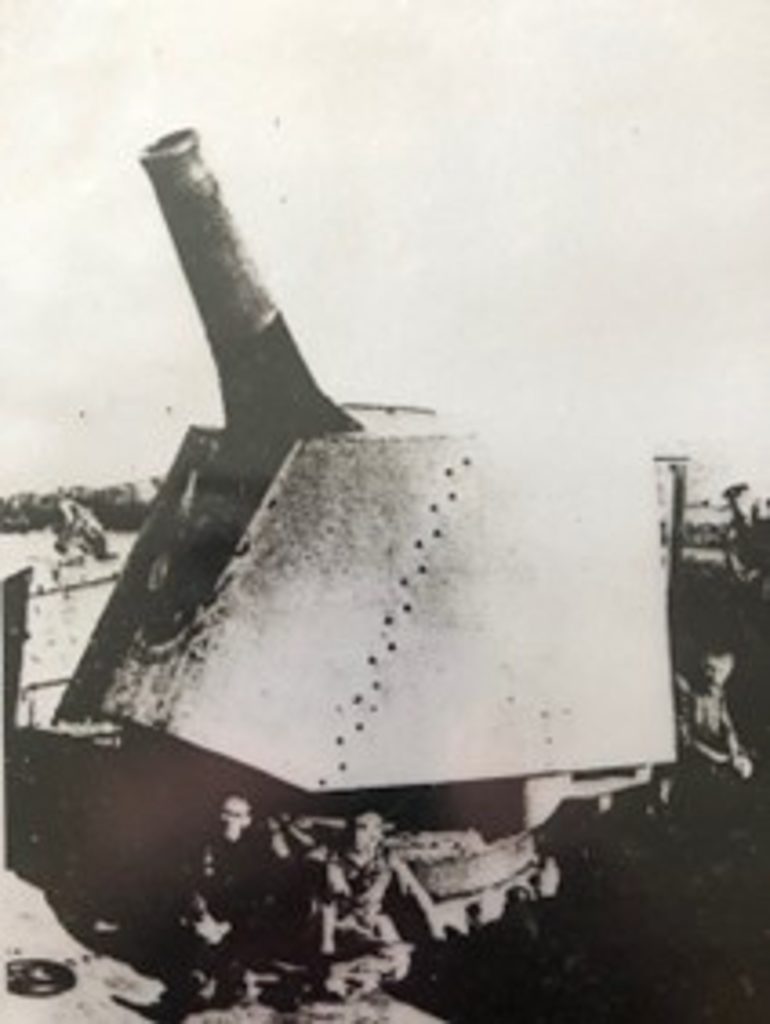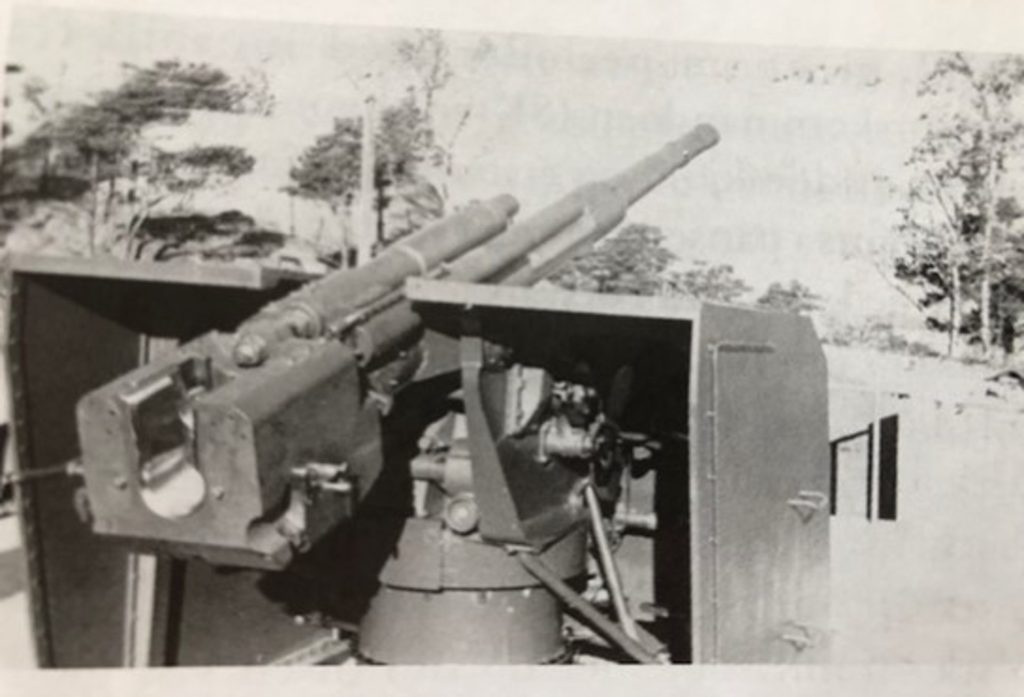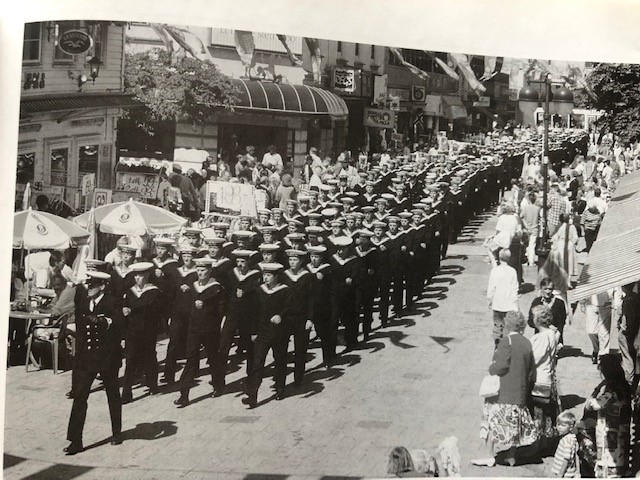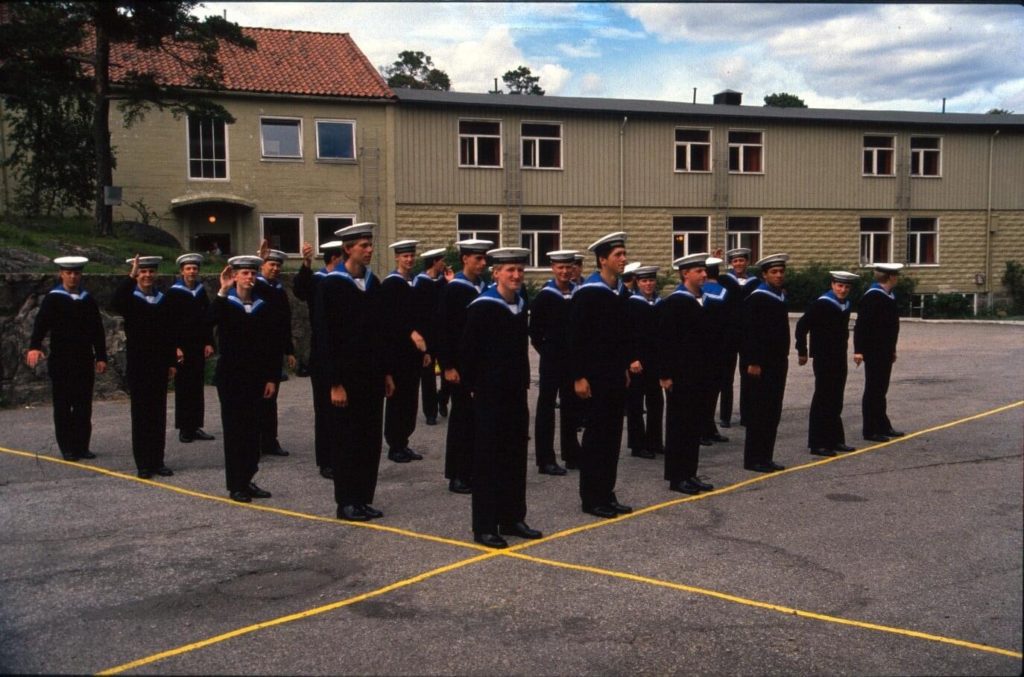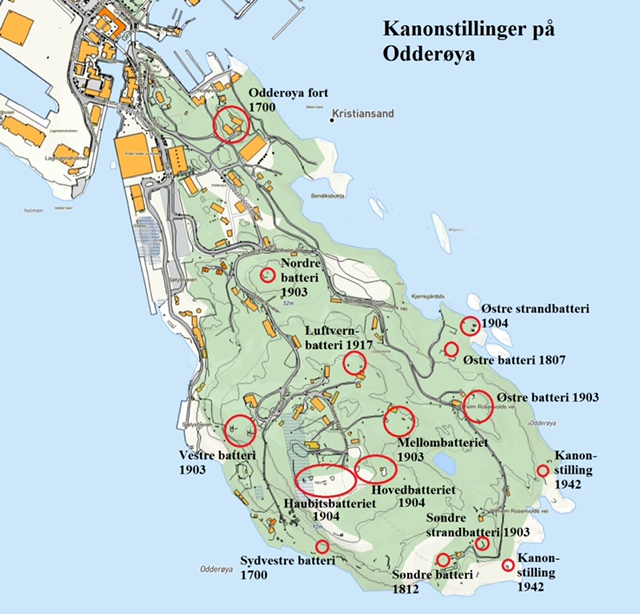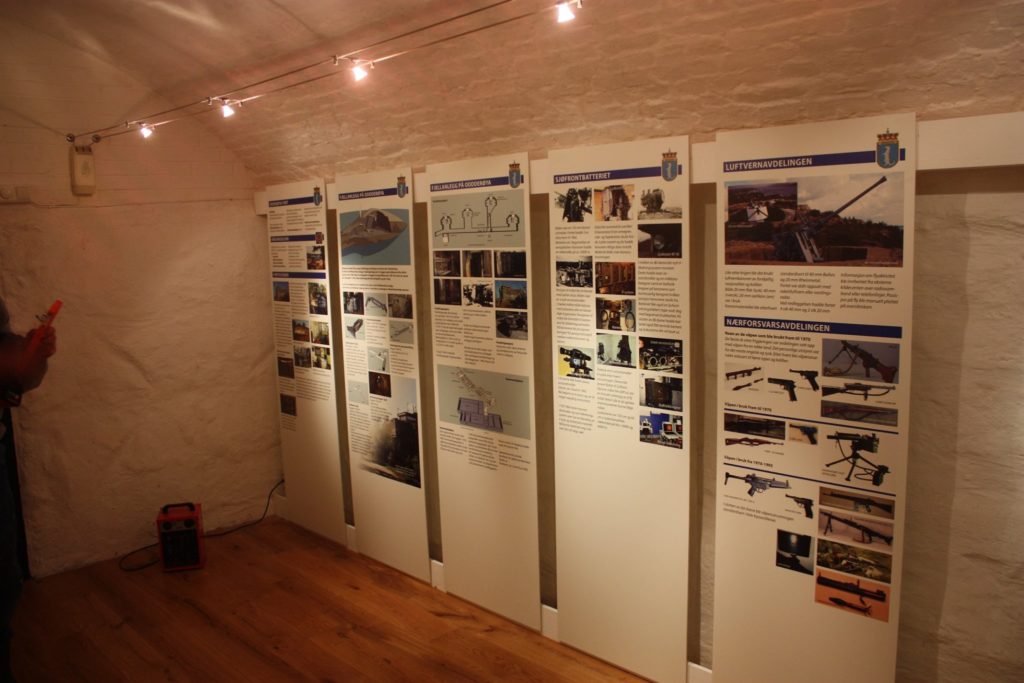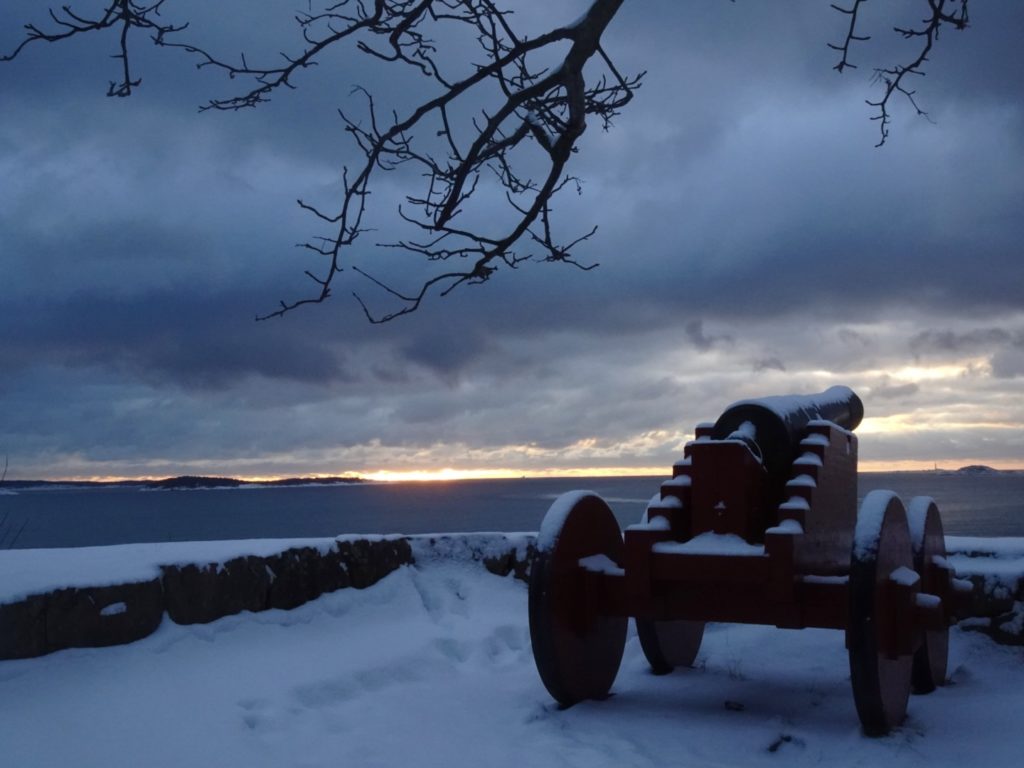See your own map in the Gallery of the various redoubts and batteries that have been on the island.
Militarily, Odderøya had its military heyday in 1905 and during the neutrality guard during World War I. At that time, the island was equipped with the modern cannons and fortifications of the time. Fully manned, Kristiansand Fortress was to have 250 officers and 1200 privates. The fortress organization also included the battery and minefield in Marvika/Gleodden, guard vessels and observation posts in Randesund and on Flekkerøya. The fortress then had a Main Battery with 2 21cm cannons, 3 batteries with 2 15cm cannons and 1 Howitzer Battery with 4 24cm cannons, as well as the Eastern Beach Battery which had 2 75mm cannons. In Marvika were 3 15cm cannons, 2 75mm cannons and a minefield (which was to be laid from Gleodden to Smeholmen).
Throughout history, there have been periods when the Armed Forces were given a lower priority. This also applied to Kristiansand Fortress, which was placed in reserve in the 1920s. This meant, among other things, that not enough personnel were trained. No exercises were conducted and the equipment was only slightly maintained. This was a deliberate policy, Det Brukne Gevær. This lower priority of the Armed Forces and the coastal fortresses had disastrous consequences on April 9, 1940. Even though they fought a heroic battle on Odderøya and drove the Germans back twice, they would not have been able to resist the superior force for longer than they did. The German invasion force was allowed to pass unhindered on its third invasion attempt because someone from the fortress mistook a signal flag for the French flag. 8 were killed and about 40 wounded during the attacks, which lasted from 0500 to about 1130.
During the war, the Germans moved the best guns to Randøya and Flekkerøya and some further west. The howitzer battery was left behind and was fired at once. They moved Cannon 2 to Western Battery and established a communications center in Cannon 2's ammunition magazine and cover room. Odderøya was used by the Germans as a recruit school. They built a number of barracks and improved the road network. Likewise, they built two gun emplacements in the south of the island for some armored guns. These were dismantled in the 1960s.
The howitzer guns remained, without being used, until the mid-1950s when they were sold as scrap.
In 1945, a 2-cannon battery of the 10.5cm K33 type was installed on Odderøya in the former Middle Battery. The measuring station and command post were in the former main battery's command post.
In the early 1950s, the gun was replaced with the German 10.5cm SKC/32 and in 1961 the third gun was installed in the Eastern Battery.
The battery's task was to protect the minefield that was to be laid between Grønningen and Oksøy lighthouse in the event of an armed conflict. The battery was also supposed to be able to provide artillery support to the neighboring forts Randøya and Krossodden (on Flekkerøya). The cannon had a rate of fire of approx. 17 shots per minute and the firing range was 15,000 metres. From 1985, old ammunition was replaced with modern ammunition that was more effective against vessels than the old x-German ammunition. The battery was closed in 1994.
The coastal artillery's organization on Odderøya
After the war, there were 5 cohorts that had not been in for initial service and intensive training of commanders who could educate these large cohorts of soldiers was initiated. One had garrisons on Odderøya, Randøya and on Flekkerøya for periods. Initial service was initially 16 months, then 12 and at the end (1993) 9 months. Kristiansand Fortress changed its name to Kystartilleribrigade Sør and then back to Kristiansand Fortress.
In 1962, the Coastal Artillery was transferred to the Navy and the fortress' name was changed to the Southern Naval Command, and after a few years became the Southern Naval District, a name they kept until their closure in 2000.
On Odderøya, in addition to a recruit school with 1,000 soldiers a year until 1993, there was the Naval District's management and operations department as well as a personnel and station department with a large workshop organization that consisted of an artillery workshop, searchlight workshop, gunsmith, servo workshop, carpentry workshop, plumber, welding workshop, painting workshop, a sanitary department and a transport department.
The task of the district was to keep plans up to date, maintain material and equip the war crew, which numbered 3,000 men.
In the 1950s, the Naval District's communications department was located in an extension to the Commander's Residence. Later, the department was moved to the basement floor of the administration building and then in the 1970s was moved to the Cold War facility at the top of the island. There it was until closure.
The recruit school was supposed to give the soldiers basic skills in military disciplines within 3 months, after which they were distributed to duty stations mainly in Northern Norway. The recruits were housed at the Main Barracks, the Union Barracks (at the Odderøya kindergarten), the Eastern Barracks and the Top Barracks (demolished).
In addition to the aforementioned departments, driving courses and cooking courses were conducted on Odderøya for each contingent. When the recruit school was closed and the Naval District (the few positions that were left) moved to Marvika, the Maritime Guard (SHV area) moved into the Command Place at Odderøya Fort and eventually the SHV section moved into the district's Command Place (Cold War Facility). They stayed here until 2006.
